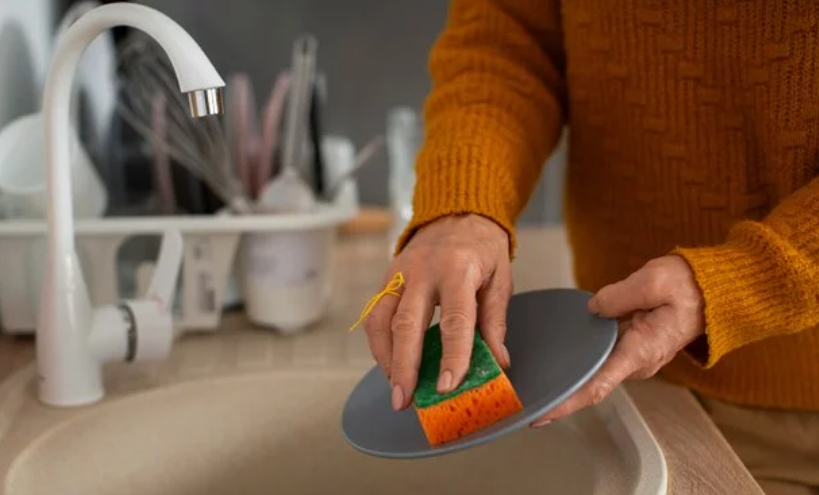
Kitchen Cleaning Brush: Your Ultimate Guide to a Cleaner, Healthier Kitchen
A clean kitchen is not just visually appealing; it’s essential for health and hygiene. One of the most effective yet underrated tools for maintaining kitchen cleanliness is the kitchen cleaning brush. Whether you are scrubbing pots, cleaning sinks, or reaching the hard-to-clean corners of your kitchen, a kitchen brush can make the task easier, faster, and more effective. In this article, we will explore everything about kitchen cleaning brushes—from types and materials to proper usage, maintenance, and innovative cleaning tips.
A kitchen cleaning brush is a specially designed brush used for cleaning various kitchen surfaces and utensils. Unlike general-purpose brushes, kitchen brushes are designed to handle food residues, grease, and stains efficiently. They often feature ergonomic handles, durable bristles, and sometimes specialized shapes to clean specific areas like bottles, sink corners, or cutting boards.
Importance of Using a Kitchen Cleaning Brush
Keeping your kitchen clean is critical for preventing bacterial growth, mold, and unpleasant odors. Here’s why a kitchen brush is an indispensable tool:
- Efficient Cleaning: Bristles reach tight corners and crevices that sponges or cloths cannot.
- Hygienic: Brushes can be easily sanitized, reducing the spread of germs.
- Long-lasting: High-quality brushes last longer than disposable sponges.
- Eco-friendly: Reusable brushes reduce waste compared to disposable cleaning pads.
- Versatile: Suitable for cleaning dishes, countertops, cutting boards, sinks, stovetops, and even vegetables.
See also: How to Get Cleaner Pond Water for 1000-Gallon Gardens – Step-by-Step
Types of Kitchen Cleaning Brushes
Kitchen brushes come in various designs, each suited for specific tasks. Understanding these types helps you choose the right brush for your needs.
1. Dish Brushes
Dish brushes are the most common type used in kitchens. They are designed for washing plates, pots, and pans. Key features include:
- Long handles for better grip
- Stiff bristles for scrubbing tough stains
- Compact heads for maneuvering inside pots and pans
2. Bottle Brushes
These brushes are narrow and long, perfect for cleaning bottles, vases, and tall containers. Features:
- Cylindrical brush heads that fit inside bottles
- Soft or medium bristles to avoid scratching glass or plastic
- Flexible handles for reaching the bottom
3. Scrub Brushes
Scrub brushes are heavy-duty and designed for tough cleaning tasks like scrubbing sinks, stovetops, and countertops. Features:
- Stiff and thick bristles
- Wide heads for covering large surfaces
- Ergonomic handles for strong grip and pressure
4. Vegetable and Fruit Brushes
These brushes are specifically designed for cleaning vegetables and fruits before cooking or eating. Features:
- Soft bristles to prevent damaging the produce
- Ergonomic or short handles for precision
- Some are designed to scrub root vegetables like potatoes or carrots
5. Multi-purpose Brushes
Multi-purpose brushes combine features of other types, making them versatile for general kitchen cleaning. Features:
- Different bristle shapes for various surfaces
- Compact for storage
- Can be used on dishes, counters, sinks, and appliances
Materials Used in Kitchen Cleaning Brushes
The performance and durability of a kitchen brush largely depend on its materials. There are two main components: the handle and the bristles.
1. Handles
- Plastic: Lightweight, affordable, and easy to clean, but less eco-friendly.
- Wood: Durable and eco-friendly; often made from bamboo, resistant to moisture.
- Metal: Strong and sturdy, often used in bottle brushes; can be prone to rust if not properly coated.
2. Bristles
- Nylon: Durable, flexible, and resistant to water and chemicals; ideal for scrubbing dishes.
- Natural fibers: Plant-based fibers like tampico or coconut are biodegradable and gentle on surfaces.
- Silicone: Flexible, heat-resistant, and easy to sanitize; great for delicate surfaces.
How to Choose the Right Kitchen Cleaning Brush
Choosing the right brush depends on your cleaning needs and kitchen setup. Consider these factors:
- Purpose: Determine if you need it for dishes, surfaces, bottles, or vegetables.
- Bristle Type: Stiff for heavy scrubbing, soft for delicate items.
- Handle Design: Ergonomic handles reduce hand fatigue.
- Durability: High-quality materials ensure long-term use.
- Maintenance: Brushes that are easy to clean and sanitize save time and effort.
How to Use a Kitchen Cleaning Brush Effectively
Even the best brush will underperform if used incorrectly. Follow these tips:
- Pre-soak Stubborn Residues: Soak dishes or pans in warm soapy water before scrubbing.
- Scrub in Circular Motions: Helps remove dirt efficiently.
- Use Separate Brushes for Different Tasks: Avoid cross-contamination between dishes, vegetables, and sinks.
- Rinse Frequently: Prevents debris from sticking to the bristles.
- Dry After Use: Avoids bacterial growth on the brush itself.
Cleaning and Maintaining Your Kitchen Brush
Maintaining hygiene in the kitchen includes keeping your brushes clean. Here’s how:
- Regular Rinsing: After each use, rinse under hot water.
- Sanitize Weekly: Soak brushes in a mixture of hot water and vinegar or use mild bleach solution.
- Dry Completely: Store in a well-ventilated area to prevent mold.
- Replace When Worn Out: Worn bristles reduce effectiveness and can harbor bacteria.
Innovative Uses for Kitchen Brushes
Kitchen brushes are versatile tools beyond basic cleaning:
- Cleaning grout: Small scrub brushes work well on tile grout.
- Cleaning kitchen appliances: Remove crumbs from toasters or coffee machines.
- Cleaning cutting boards: Helps remove stains and odor-causing residues.
- Pet bowls: Use a separate brush to keep pet feeding areas hygienic.
Eco-friendly Kitchen Cleaning Brush Options
With growing environmental awareness, eco-friendly brushes are gaining popularity:
- Bamboo brushes with natural bristles: Biodegradable and durable.
- Recyclable plastic brushes: Made from recycled materials, reducing waste.
- Silicone brushes: Long-lasting and easy to sanitize, reducing the need for replacements.
Common Mistakes to Avoid When Using Kitchen Brushes
- Using the Same Brush for All Tasks: Can lead to cross-contamination.
- Not Cleaning the Brush: A dirty brush spreads bacteria.
- Applying Excessive Pressure: Can damage delicate surfaces.
- Ignoring Replacement: Old bristles lose effectiveness and hygiene.
Advantages of Using Kitchen Brushes Over Sponges
While sponges are common, brushes have clear advantages:
- Longer-lasting: Sponges wear out faster and absorb odors.
- Better for Hygiene: Less likely to harbor bacteria.
- More Effective: Bristles reach into corners and scrub stubborn stains.
- Eco-friendly: Reusable and durable, reducing waste.
Tips for Extending the Life of Your Kitchen Brush
- Rinse and dry thoroughly after each use.
- Avoid leaving in standing water.
- Clean weekly with hot water or vinegar.
- Store in a ventilated holder to prevent mildew.
Conclusion
A kitchen cleaning brush is an essential tool for maintaining a clean, hygienic, and organized kitchen. With the right brush, proper usage, and regular maintenance, cleaning becomes more efficient, effective, and even enjoyable. From scrubbing dishes to cleaning fruits, vegetables, and kitchen surfaces, a brush is versatile and indispensable. By choosing the right type, caring for it properly, and adopting eco-friendly options, you can ensure both cleanliness and sustainability in your kitchen.
Investing in a good kitchen cleaning brush is more than just a purchase—it’s a commitment to hygiene, efficiency, and a healthier lifestyle. So next time you reach for that sponge, consider upgrading to a kitchen brush. Your dishes, your counters, and your health will thank you.




